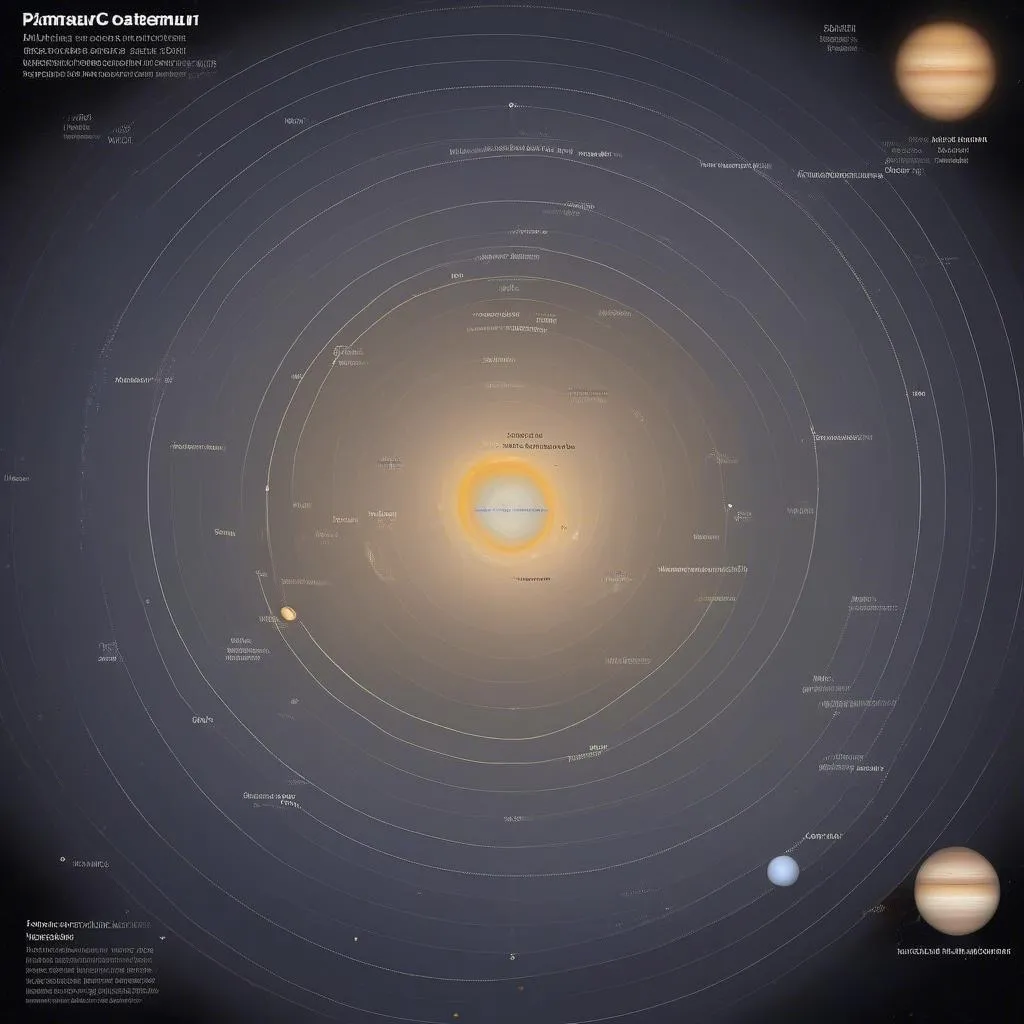Have you ever gazed up at the night sky, mesmerized by the twinkling stars, and wondered about the vast distances between us and them? We measure these astronomical distances in light-years, a concept that often sparks curiosity and confusion. So, how far does a light-year actually travel? Buckle up, space explorer, as we embark on a cosmic journey to unravel the mysteries of light-years and their mind-boggling scale.
Delving into the Concept of a Light-Year
Contrary to what the name might suggest, a light-year isn’t a measure of time, but of distance – the incredible distance light travels in one Earth year. To put it into perspective, imagine traveling at the speed of light, a mind-blowing 299,792,458 meters per second (approximately 186,282 miles per second). Now imagine maintaining that speed for an entire year. The distance you’ve covered is one light-year.
 Light Traveling Through Space
Light Traveling Through Space
Calculating the Cosmic Distance: A Numerical Breakdown
To comprehend the sheer vastness of a light-year, let’s break it down:
- Speed of Light: Approximately 186,282 miles per second (299,792,458 meters per second)
- Seconds in a Year: 31,536,000 seconds (approximately)
- Distance Covered in a Year: 5,878,625,370,000 miles (9,460,730,472,580.8 kilometers)
That’s almost 6 trillion miles covered in just one year at the speed of light!
A Journey through Light-Years: Exploring the Universe
Understanding light-years opens up a whole new perspective on the universe’s grand scale. For instance:
- The Milky Way Galaxy: Our home galaxy, the Milky Way, spans a vast 100,000 light-years in diameter. Imagine the countless stars and celestial wonders it holds within its celestial tapestry.
- Proxima Centauri: Our closest stellar neighbor, Proxima Centauri, lies approximately 4.24 light-years away. Even at the speed of light, it would take us more than four years to reach this red dwarf star.
 Milky Way and Proxima Centauri
Milky Way and Proxima Centauri
FAQs: Unraveling the Mysteries of Light-Years
Q: If light takes time to travel, are we seeing stars as they were in the past?
A: Absolutely! When we gaze upon distant stars, we’re witnessing light that has traveled for years, centuries, or even millennia to reach our eyes. It’s like peering into the past, observing these celestial objects as they once were.
Q: How does understanding light-years impact our understanding of the universe?
A: Light-years provide a crucial yardstick for measuring the vast distances between celestial objects. They allow astronomers to map the universe, study its evolution, and unravel the mysteries of distant galaxies.
 Astronomer Studying Galaxy
Astronomer Studying Galaxy
Beyond the Cosmos: Finding Wonder in Every Journey
Whether we’re exploring the vast expanse of space or embarking on an adventure closer to home, like a road trip along California’s iconic Pacific Coast Highway, the concept of distance plays a vital role in our perception of the world. It reminds us of the immense scale of the universe and the countless wonders it holds.
Just as astronomers use light-years to navigate the cosmos, we can use tools like TRAVELCAR.edu.vn to plan our earthly explorations. From researching destinations like the Maldives (did you know you can learn “how to travel to the Maldives” on our site?) to understanding the intricacies of “how to build a travel trailer,” TRAVELCAR.edu.vn provides a wealth of information to satisfy your wanderlust.
So, the next time you look up at the night sky, remember that you’re not just seeing stars; you’re witnessing the awe-inspiring journey of light across time and space.

